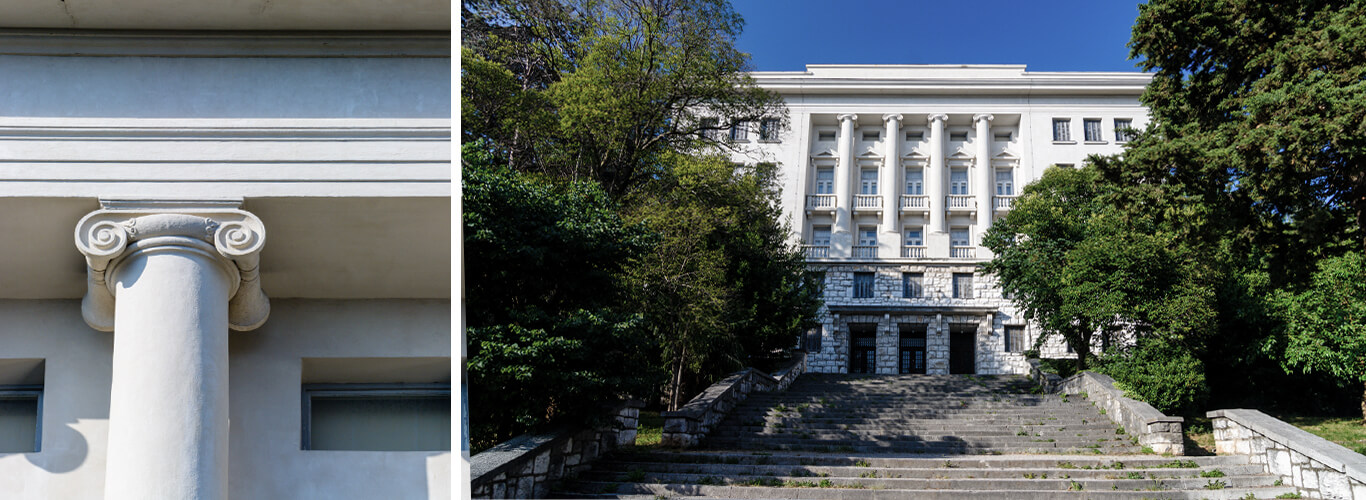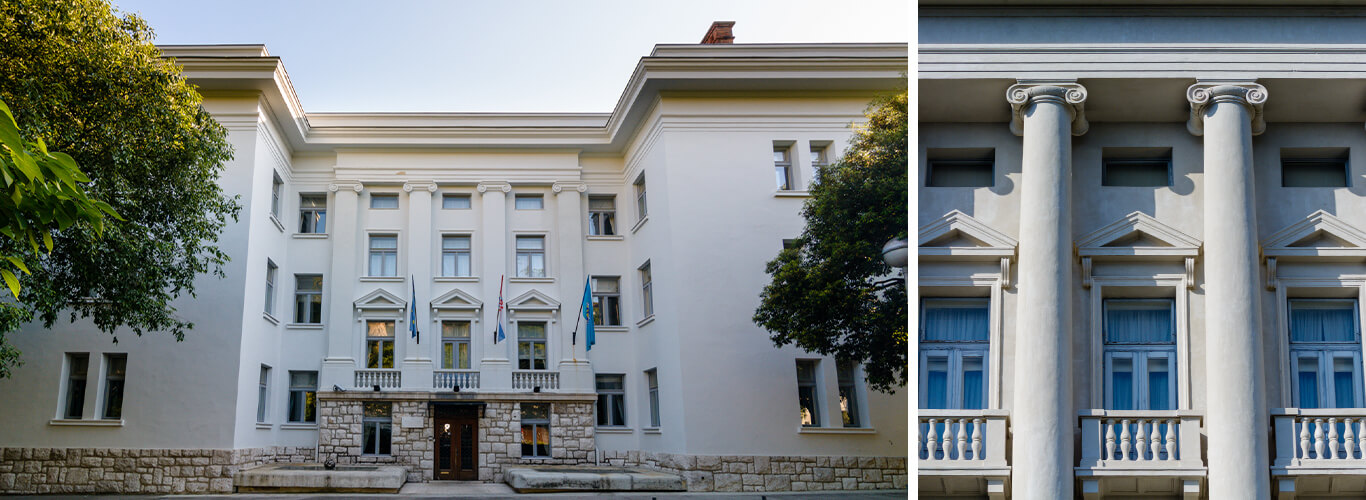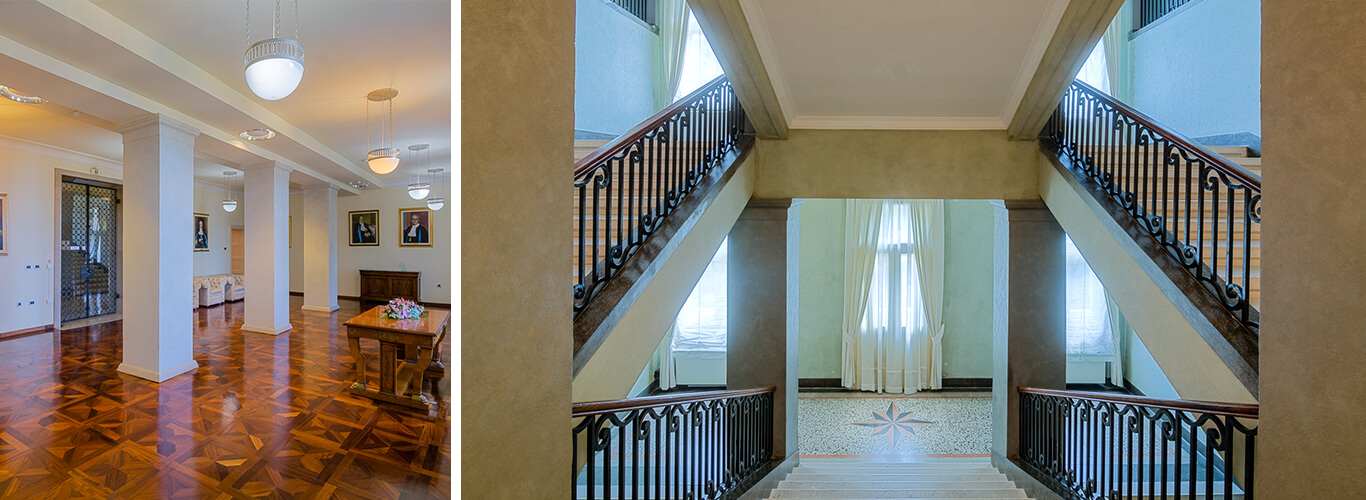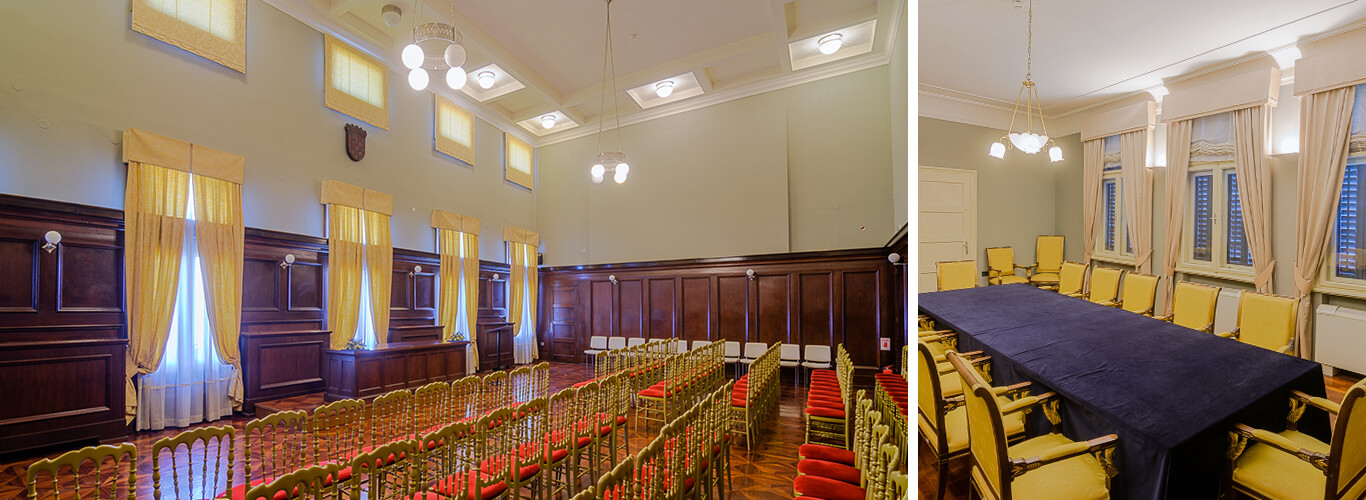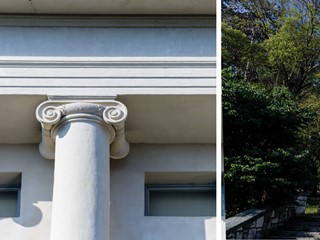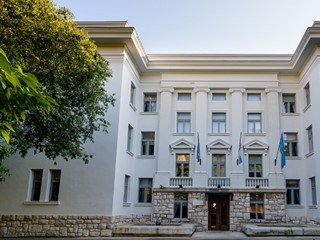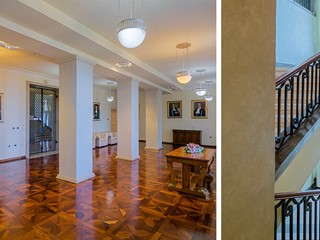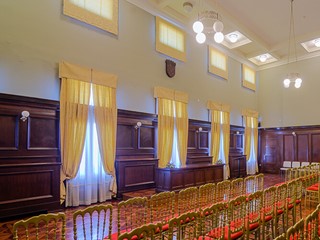Rectorate
address: 10 Trg braće MažuranićaPeriod: Modernism
Kind: Immovable material heritage
Century: 20
Year: 1928
Purpose: educational
The University of Rijeka Rectorate was built as the City of Sušak City Hall at the end of the 1920s. The building was made according to the project by the architect Juraj Denzler from Zagreb, with significant changes made by the City Construction Office headed by Zlatko Prikril.
The original idea was to build the City Hall at the location of the Kortil Gallery in the centre of the then Sušak. However, owing to a very expensive price of the lot, it was decided to buy a property on the slope of the Trsat hill, where the Sušak Gymnasium had been built. The tender was published in 1927 and no project won first prize. The project by Juraj Denzler entitled A.D. MCMXXVII took second place. Denzler’s project was stylistically influenced by Viktor Kovačić, a famous architect from Zagreb. Despite the influence by modernism and the international style, the author turned to neo-classical stylistic features. The building has a simple rectangular layout with indented north entrance and a prominent south entrance. Rustic dressing of the stone on the ground floor and Ionian columns are an obvious example of the use of stylistic guidelines from the past. The building was furnished in 1930 with furniture from two Zagreb factories.
Owing to the inclination of the ground, the north and south entrance are not levelled. Although the building is seemingly oriented towards the south, the north entrance naturally became the main entrance, as it is also the exit to the square and the main street. The garden of the Hall was arranged by Josip Kulfanek, the city gardener responsible for the realization of the Trsat Park and the restoration of the park in Mlaka.
The first public monument on Sušak was erected on today’s square Trg braće Mažuranić, after the construction of the City Hall. It was decided that it would be a monument dedicated to the king Alexander I the Unifier and a public tender was published for the artistic solution. The first prize was given for the solution by Franjo Kršinić and Antun Augustinčić, renowned artistic names, under the name Jadran (Adriatic). The figure of the king Alexander was dressed in admiralty clothes with a helm in his arm, while the base of the statue was adorned with reliefs of the seamen and Uskok fighters, the protectors of the Adriatic. One of the reasons why such a monumental statue was raised was to ingratiate with the authorities which proclaimed them as separatist after the renaming of the Cultural Centre into the Croatian Cultural Centre.
The function of the building changed during the years, this is general chronology:
•1930 – 1941 – City Hall
•1941 – 1943 – Headquarters of the occupying Italian Civil Administration
•1943 – 1945 – Headquarters of the occupying German Civil Administration
•1945 – 1962 – National Liberation Committee – Sušak and District Sušak
•1962 – 1964 – Location of the District Administration Service Rijeka
•1964 – 1991 – Military (garrison) infirmary and medical station
•1991 – 1992 – Government of the Republic of Croatia
•1992 – Ministry of Health of the Republic of Croatia
•1992 – 1996 – Health Centre in Rijeka
•1996 – today – Rectorate of the University of Rijeka
Valorization:
The building is not included in the List of Protected Cultural Goods in the Republic of Croatia Register of Cultural Goods.
Bibliography:
Kolacio, Prikril, Urbanistički razvoj Rijeke, Rijeka Matica Hrvatska Proceedings, Zagreb, 1953, p. 198
PAR JU48, box 48, file 20
HR-DARI-58, box 48
Lozzi Barković, Julija, Arhitektura Rijeke i Sušaka između dva rata (3): Zgrada Rektorata na Sušaku, Novi list, 18 March 2015. Link: http://www.novilist.hr/Kultura/Arhitektura-Rijeke-i-Susaka-izmedu-dva-rata-3-Zgrada-Rektorata-na-Susaku?articlesrclink=related (25.1.2015.)
Lozzi Barković, Julija, Gradska vijećnica u Sušaku, Sušačka revija, vol. I, 1993, pp. 2–36.
Lozzi Barković, Julija, Sviluppo urbano di Sušak, in: prof. dr. sc. Elena Marchigiani and prof. dr. sc. Paolo Nicoloso, Itinerari attraverso i luoghi del moderno. Strategie per la 'costruzion' identitaria del confine Italo-Yugoslavo, tra e oltre le due guerre, Sveučilište u Trstu, Trst, 2008.
Lozzi Barković, Julija, Međuratna arhitektura Rijeke i Sušaka, usporedba i europsko okruženje, Adamić, Rijeka, 2013, pp. 225–239.
Rački, Andrija, Povijest grada Sušaka, Publishing Centre Rijeka, Rijeka, 1990.
Sveučilište u Rijeci, Zdravko Lenac, ch. ed, 4th edition, University or Rijeka, Rijeka, 2009.

